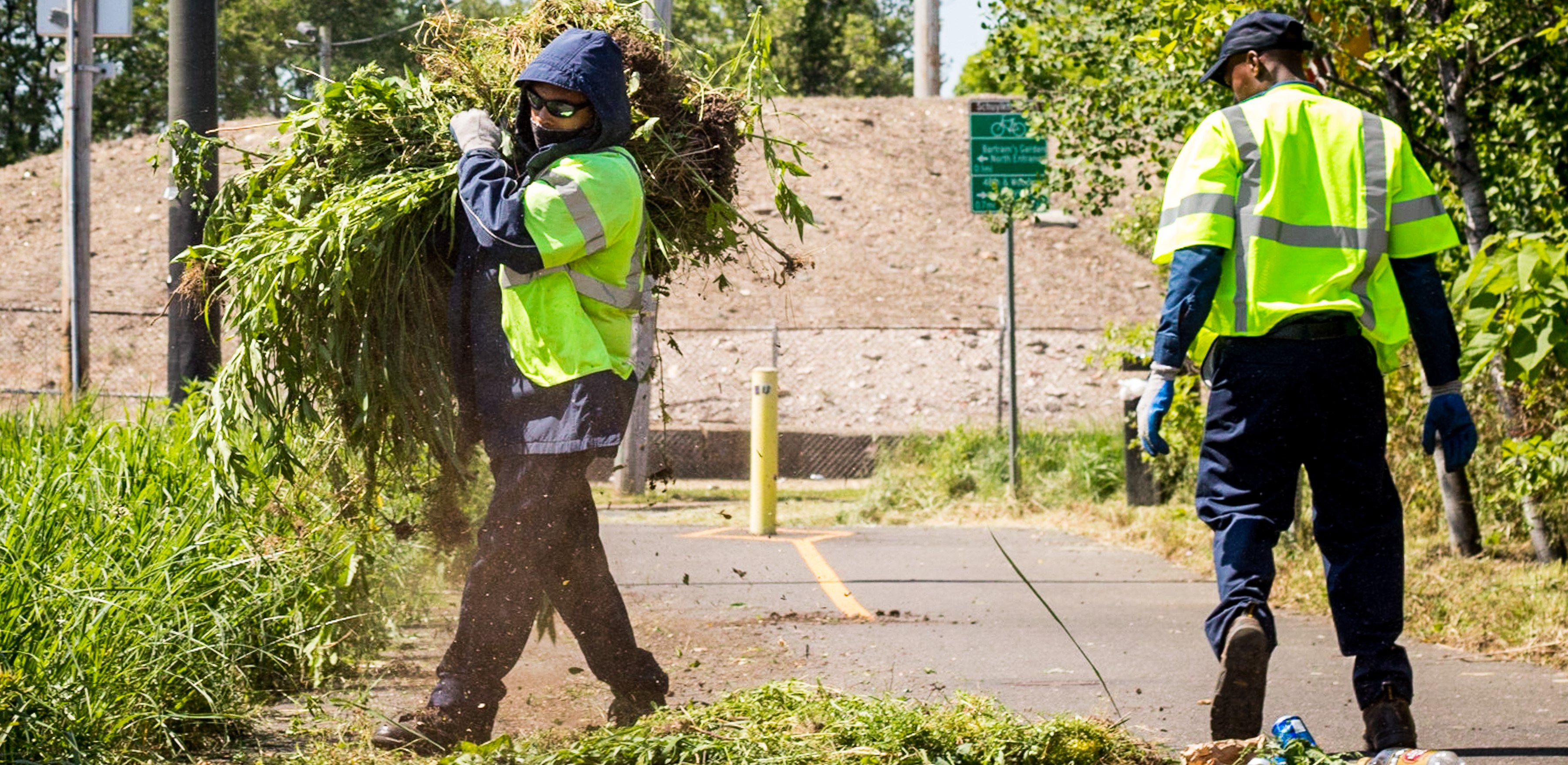You may have noticed the Water Department was recently in your neighborhood, building green stormwater systems along sidewalks and intersections to soak up stormwater and beautify the community.
Once these systems are built, there is often a gap of time between infrastructure installation and planting of trees and flowers. Have you ever wondered why there is a pause after construction is completed?
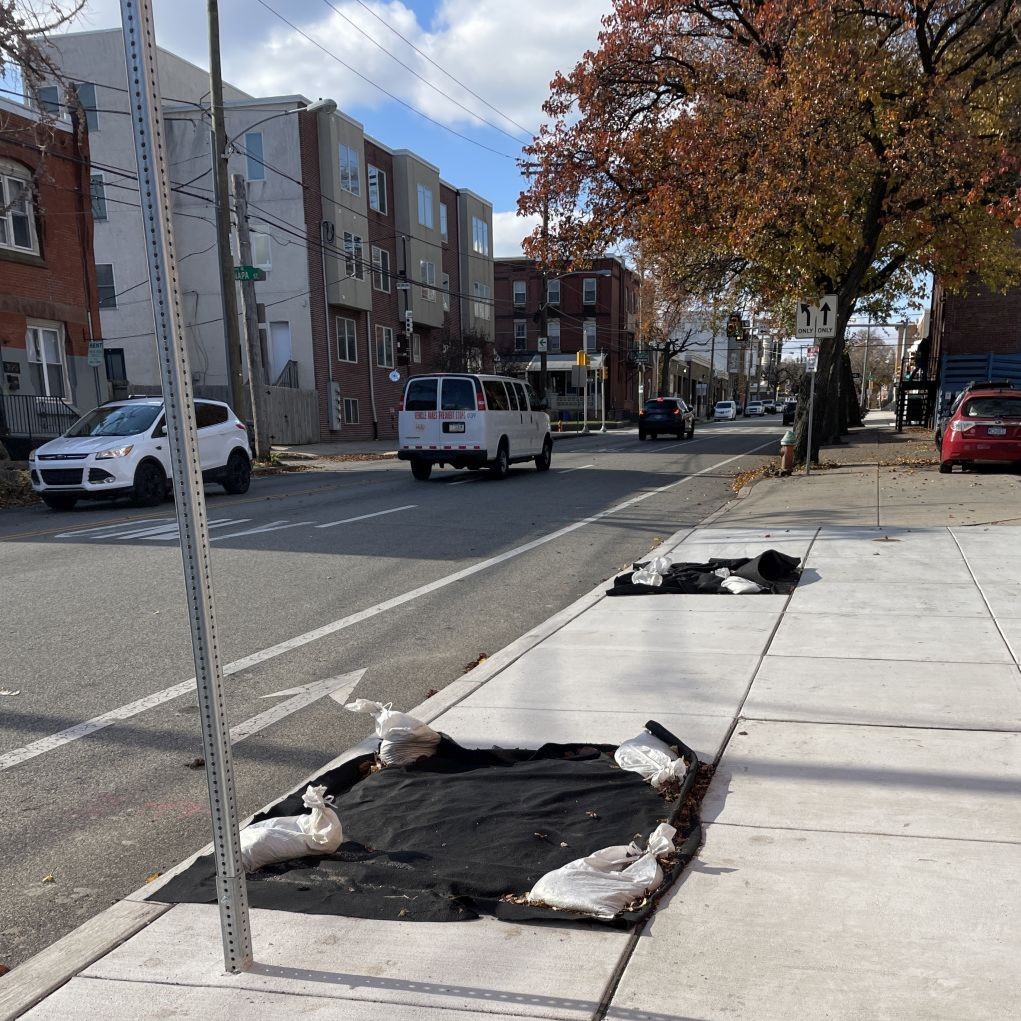
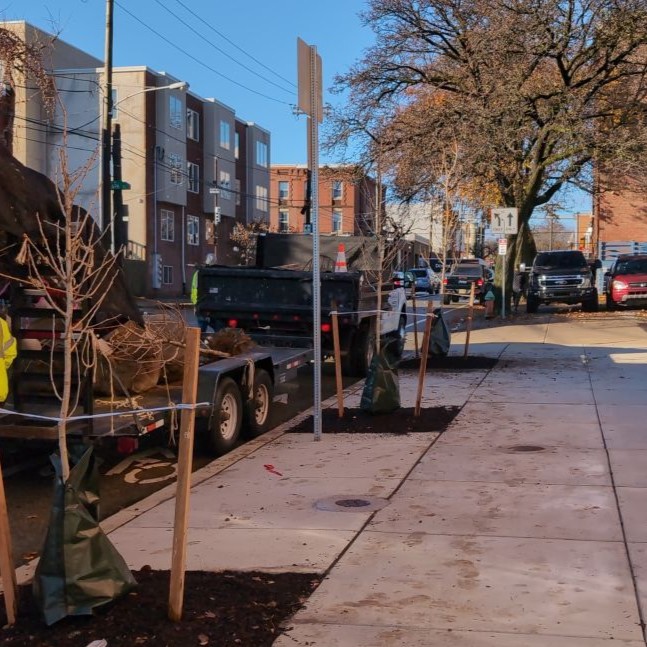
A stormwater tree trench awaiting planting, and with newly planted trees.
Green City, Clean Waters
Philadelphia’s combined sewer system serves about 60 percent of the city. During wet weather, this older section of our system often overflows. As a result, billions of gallons of stormwater and diluted sewage flow into local waterways each year.
Green City, Clean Waters is Philadelphia’s 25-year initiative to reduce the volume of stormwater entering combined sewers by pairing green infrastructure with traditional infrastructure improvements.
A green stormwater infrastructure project installs “green tools” – known in the GSI world as “systems” – such as bumpouts, tree trenches, rain gardens, and subsurface storage trenches. Projects include GSI that is packaged together in a neighborhood.
The outreach process begins years before these tools are installed and aims to connect with residents for feedback and education. During this time, the project moves through the Water Department processes, from designing the project specifications to contractor bidding and funding.
In comes the construction: systems getting built
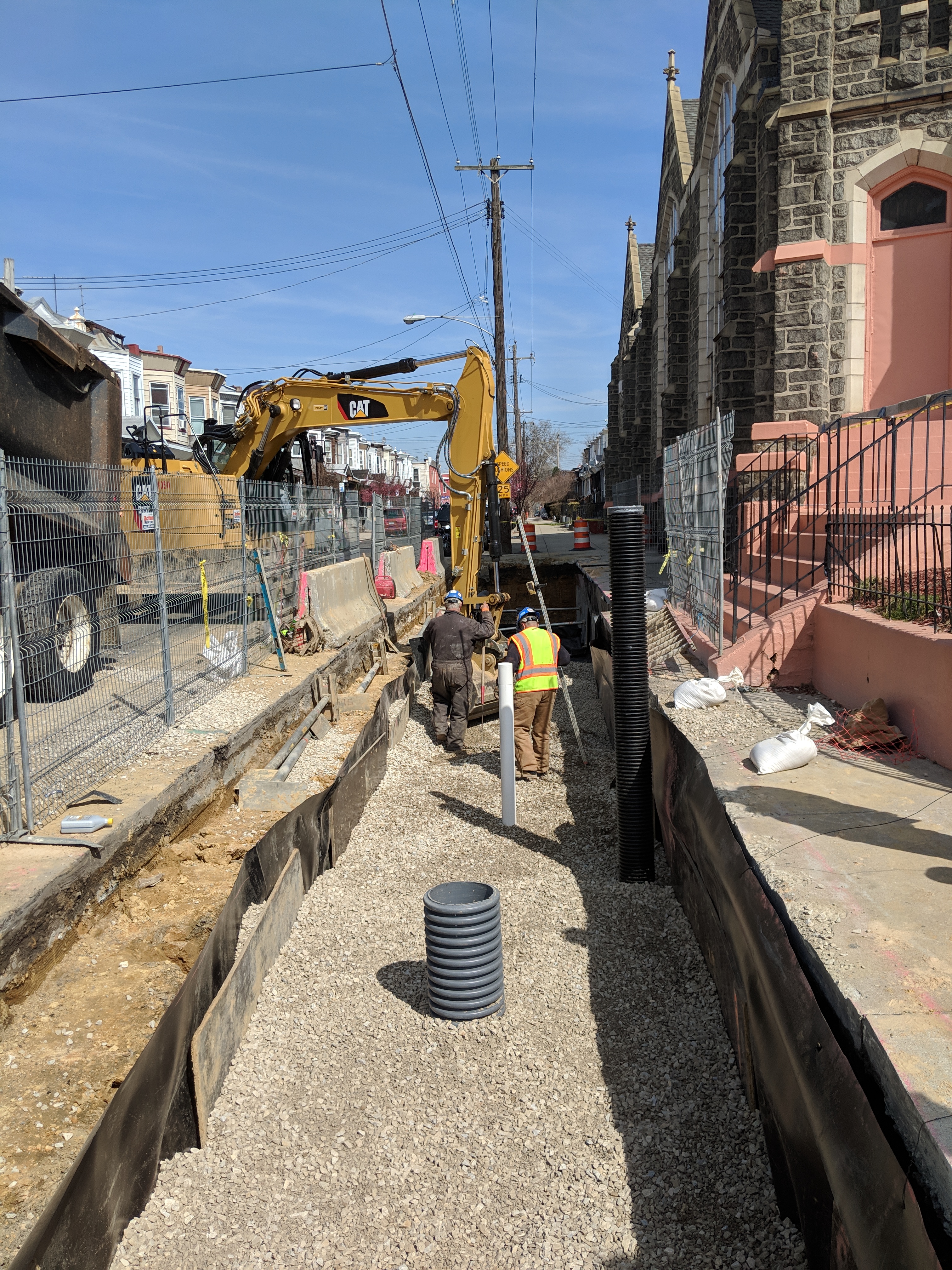
Subsurface trench under construction
Construction starts once a contractor has been awarded the project and works collaboratively with PWD Construction to develop a project schedule and submit permits. The green systems, like bumpouts and tree trenches, are constructed one at a time and typically take 4 to 6 weeks each for completion.
Once systems are installed, the Water Department schedules a final walk-through to ensure that all the work was done as planned. Only at this point is a project considered ‘substantially complete’ and is able to be passed along to the next step.
Landscaping scheduling
Once a project is substantially complete, if planting is involved, it moves to the selected Landscape contract/vendor. After planting is complete it’s handed off to the Water Department’s Green Stormwater Operations (GSO) Team.
PWD prioritizes planting species that are usually robust and survive in our region’s weather conditions. These plants are specifically selected to withstand the conditions (heavy rain, drought, etc.) in the ‘green systems’ and often have a high success rate of surviving. The vegetation is most likely to thrive if planted in the spring or fall, so we have two planting seasons each year.
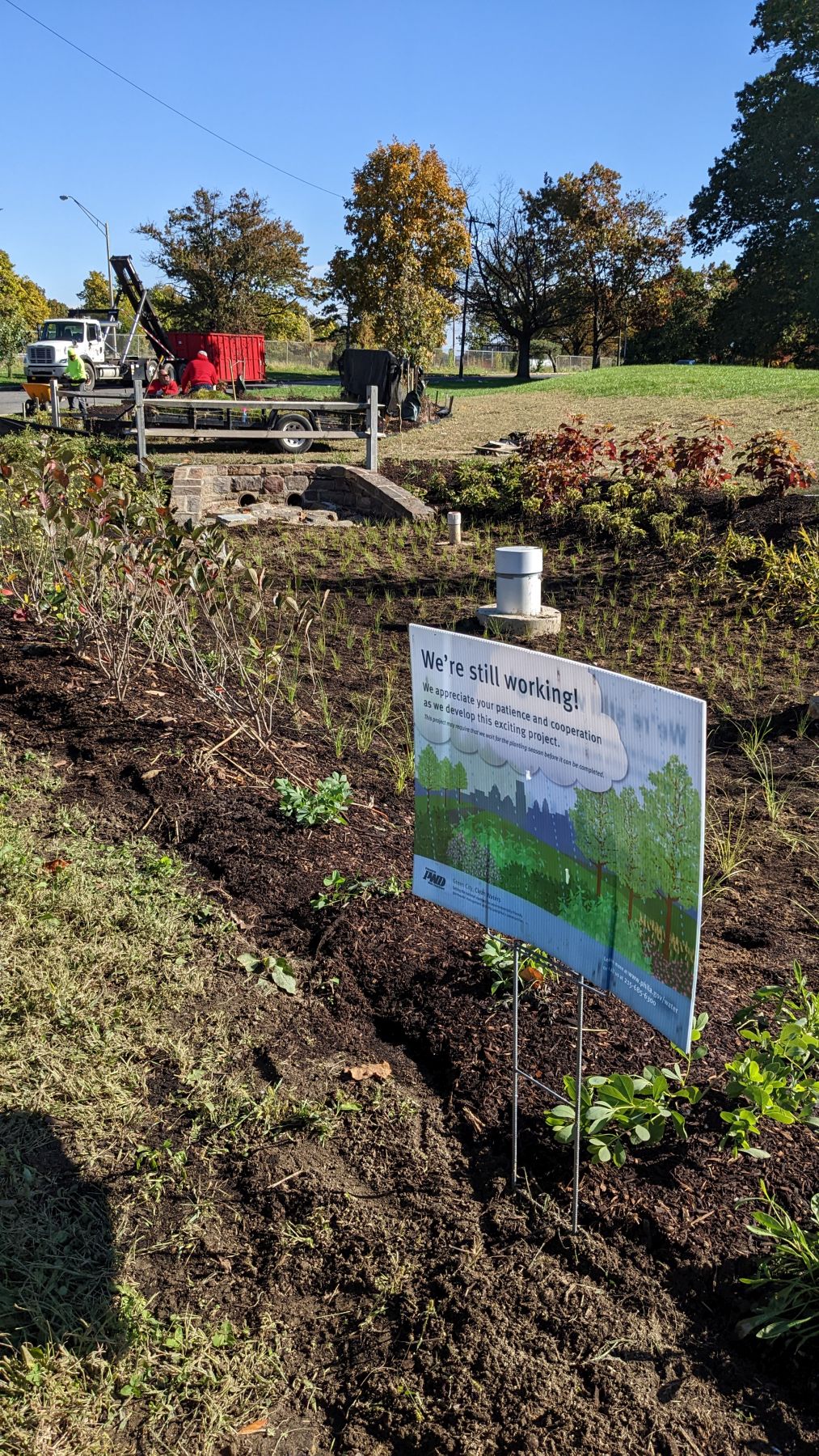 An example of green tool that was constructed and is waiting for planting.
An example of green tool that was constructed and is waiting for planting.
Fall planting is done between mid-September and the end of November, and Spring planting runs from mid-March through the end of May. If a project is not substantially complete in time for planting during the current season, it is stabilized in preparation for planting the following season. (For example, if a system is completed in May, the planting schedule for spring may be filled up, and therefore the system would have to wait until the next planting season in Fall. If construction is completed in February, the system would added to the Spring planting schedule.)
This schedule explains the gap residents often see once work is complete. It may look like the system was built and abandoned, but the systems are just waiting for their planting when the vegetation will do their best.
PWD has signage we like to distribute to sites that are awaiting planting – if you see systems in your neighborhood that could use an educational sign, reach out to Amy Hopf at water.construction@phila.gov.
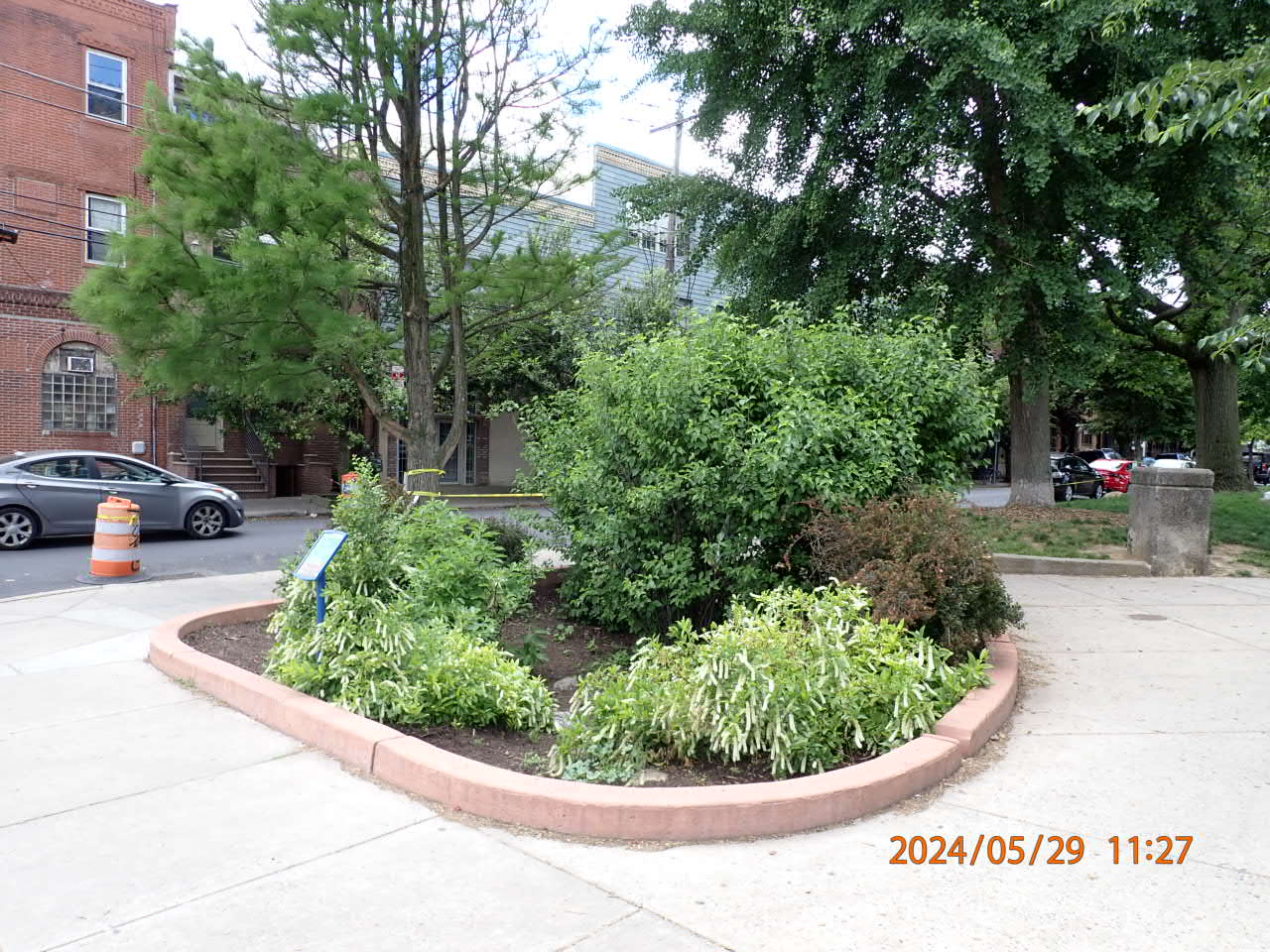 An example of green stormwater infrastructure on City property, this rain garden was installed outside of Columbus Square Park in South Philly.
An example of green stormwater infrastructure on City property, this rain garden was installed outside of Columbus Square Park in South Philly.
Recent and upcoming planting
See a map of all the planted systems in Fall 2023 and systems expected to be planted in Spring 2024
Planted systems in Fall 2023
- 50133 Lawncrest Streets Southwest
- 50181 16th Police District Headquarters
- 50201 229 E Logan Street Lot
- 50202 Bringhurst Playground
- 50205 Mantua Greenway Connections
- 50207 Snyder Avenue Greening Improvements
- 50210 24th Street Greening
- 50215 Fairmount Neighborhood Bumpouts
- 50219 Shunk Street Greening Improvements
- 50234 I Street Green Corridor
- 50241 Awbury Recreation Center
- 50247 Lawndale Streets West
- 50262 West Callowhill Street Rain Garden
- 50279 Holman Field
- 50315 Lehigh & Sedgley
Planting expected in Spring 2024:
- 50203 Penrose Ave
- 50204 Yorktown Courtyards: W end of Custis Pl
- 50205 Mantua Greenway Connections
- 50207 Snyder Avenue Greening Improvements
- 50219 Shunk Street Greening Improvements
- 50221 Lawndale Streets East
- 50226 Tabor Ave
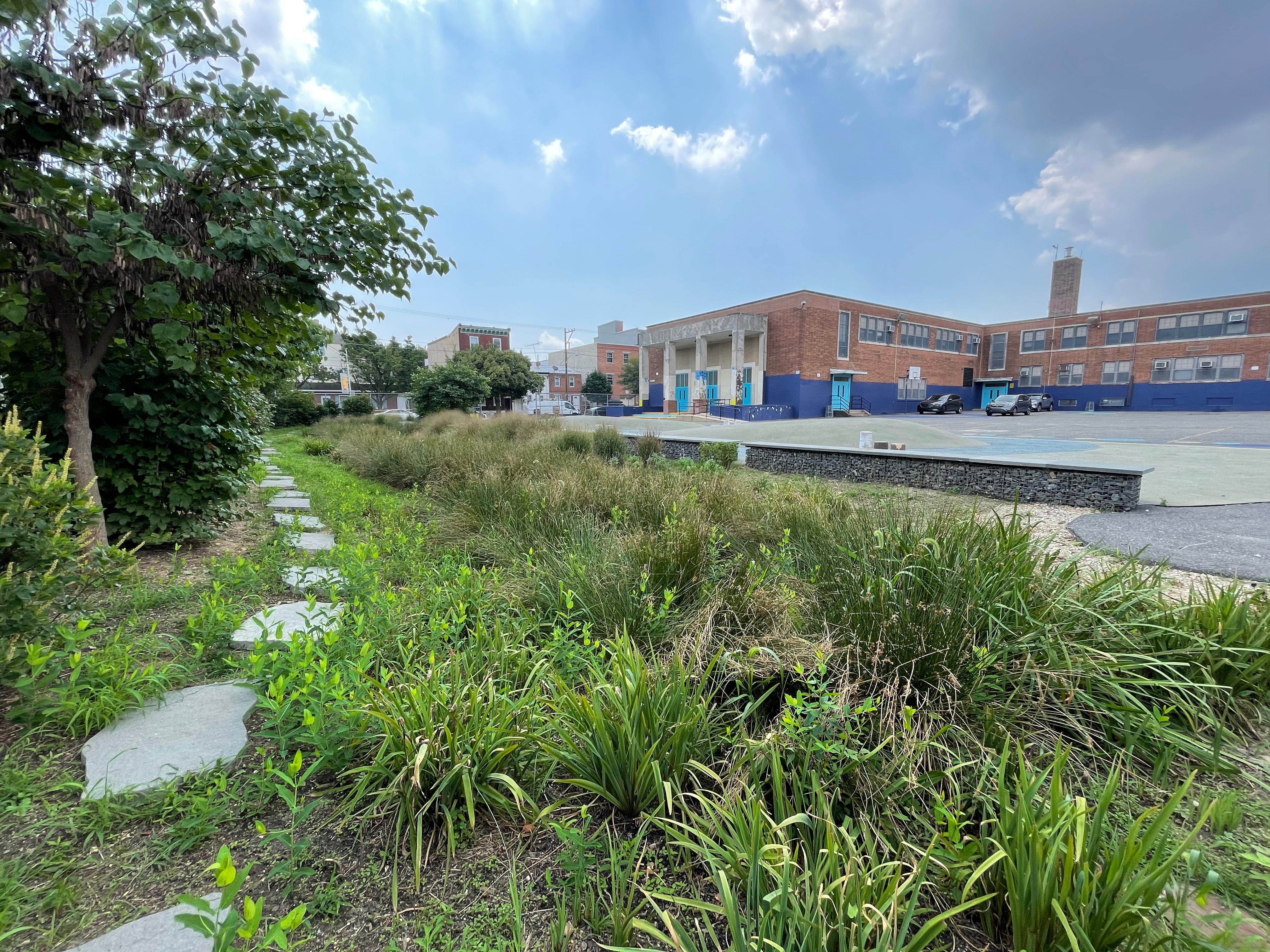
An example of green stormwater infrastructure on school property, this rain garden is located at Adaire Elementary School in Fishtown.
